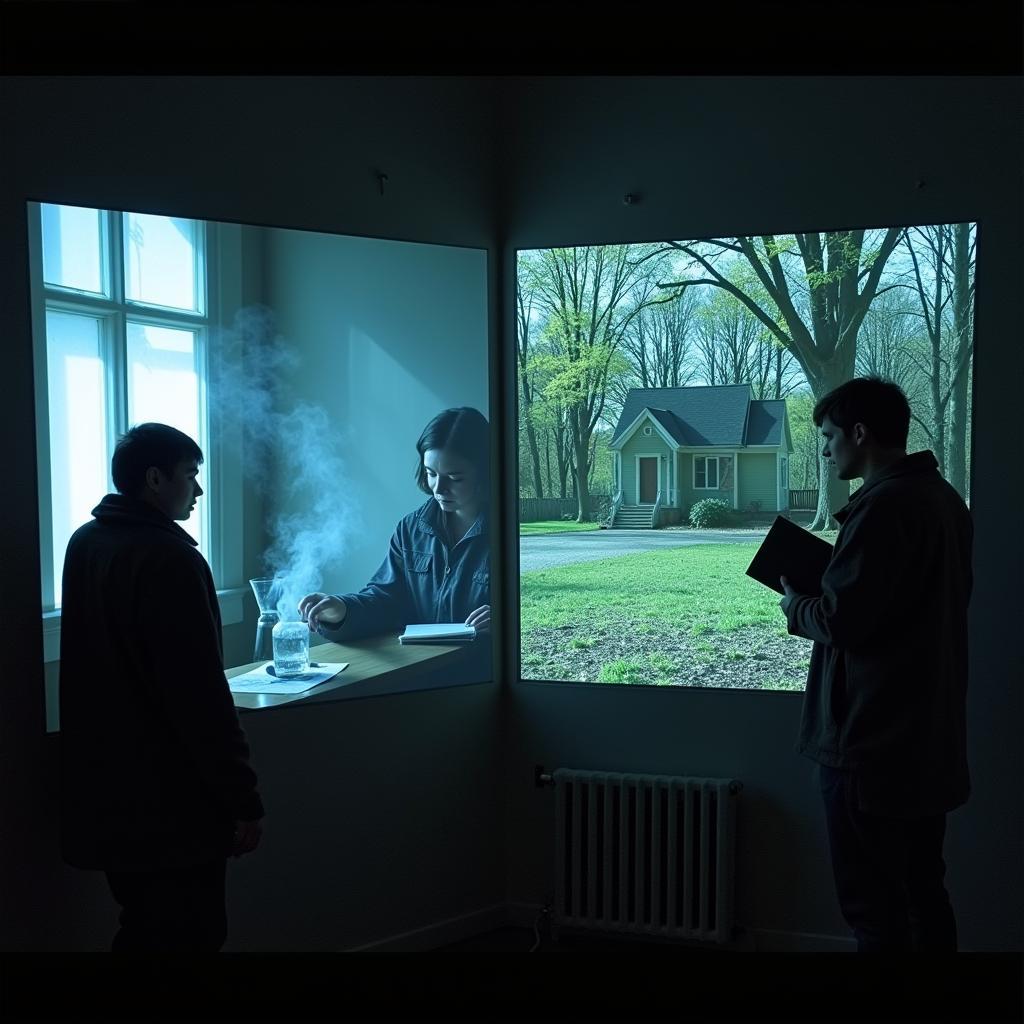The pursuit of paranormal knowledge often finds itself at a crossroads, grappling with the distinctions between “applied vs basic research.” Just as a paranormal investigator meticulously examines EVP recordings for clues of spectral voices, understanding this fundamental difference can greatly enhance our ability to explore the unknown.
 Exploring the Differences Between Applied and Basic Research in Paranormal Investigation
Exploring the Differences Between Applied and Basic Research in Paranormal Investigation
Delving into the Unknown: Basic Research in the Paranormal
Basic research in the paranormal realm is akin to an intrepid explorer charting uncharted territories. It’s driven by curiosity, a thirst for knowledge, and the ambition to expand our understanding of the unexplained. Imagine a paranormal research team venturing into a supposedly haunted forest, equipped with EMF readers and thermal cameras, their primary goal not to dispel a haunting, but to simply document and analyze any unusual energy fluctuations or unexplained phenomena.
This form of research is exploratory in nature, focusing on:
- Observation: Meticulously documenting occurrences, such as cold spots, electronic voice phenomena (EVPs), or apparitions.
- Data Collection: Utilizing various tools and techniques to gather evidence, like taking EMF readings, capturing photographs, and recording audio.
- Pattern Identification: Analyzing collected data to discern any recurring patterns or anomalies that might point to paranormal activity.
For instance, a basic research utah project might focus on collecting data on the frequency and types of reported paranormal activity in different historical periods, without seeking to immediately explain or debunk the phenomena.
Seeking Practical Solutions: Applied Research in the Paranormal
Unlike basic research, which seeks to expand our knowledge base, applied research aims to solve specific problems or answer specific questions. It takes the existing knowledge gleaned from basic research and applies it to real-world scenarios. Let’s say a family reports feeling uneasy and witnessing strange occurrences in their home after moving into a historically significant house. An applied research approach would involve:
- Targeted Investigation: Focusing on the specific reported experiences of the family and the history of the location.
- Hypothesis Testing: Formulating hypotheses based on the family’s accounts and the location’s history and then testing these hypotheses through targeted investigation.
- Solution-Oriented Approach: If paranormal activity is confirmed, the goal would be to find ways to mitigate or resolve the issue, potentially through spiritual cleansing or other appropriate methods.
Essentially, applied research is about taking the theoretical and making it practical. An excellent difference between basic and applied research can be seen in how we approach EVP analysis. Basic research might focus on understanding the different types of EVPs and their characteristics, while applied research would utilize this knowledge to analyze specific EVPs in a particular location to gain a better understanding of the potential entity present.
 Example of Applied Research in Paranormal Investigation
Example of Applied Research in Paranormal Investigation
Can Basic and Applied Research Coexist in Paranormal Investigation?
While distinct in their objectives, basic and applied research are not mutually exclusive. In fact, they often complement and enhance each other. Think of it like this: Basic research provides the building blocks, while applied research uses those blocks to construct something tangible.
For instance, imagine researchers conducting audio research book analysis on EVPs (basic research). The insights gleaned from this research could then be used to develop more sophisticated audio analysis software specifically for paranormal investigators (applied research).
Navigating the Crossroads: The Importance of Both Approaches
In the vast and enigmatic world of paranormal research, both basic and applied research play vital roles. Basic research expands the frontiers of our understanding, providing the foundation upon which we can build. Applied research takes this knowledge and transforms it into practical applications, helping us navigate and potentially even influence the paranormal world around us. As we delve deeper into the mysteries of the unexplained, embracing both approaches will be crucial to unraveling the secrets that lie hidden within the shadows.
Frequently Asked Questions
1. What is an example of basic research in parapsychology?
An example of basic research in parapsychology is a study designed to investigate whether individuals can demonstrate psychokinesis (mind over matter) by attempting to influence the outcome of a random number generator.
2. How can applied research benefit those experiencing paranormal activity?
Applied research can benefit those experiencing paranormal activity by helping to identify the source and nature of the activity, which can then inform appropriate responses, such as energy cleansing or spiritual interventions.
3. Are there any ethical considerations specific to applied research in the paranormal field?
Yes, ethical considerations in applied paranormal research include obtaining informed consent from individuals involved, respecting their beliefs and experiences, and ensuring that any interventions are conducted with sensitivity and care.
Need Help? Contact Us!
Do you have questions or need assistance with a paranormal situation? Our team at Paranormal Research is here to help. You can reach us 24/7 at:
Phone: 0904826292
Email: research@gmail.com
Address: No. 31, Alley 142/7, P. Phú Viên, Bồ Đề, Long Biên, Hà Nội, Việt Nam
We are dedicated to providing support and guidance on all matters related to the paranormal. Don’t hesitate to reach out – we’re here to help you navigate the unknown.